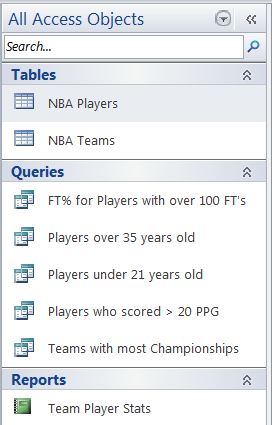1. Create a new database named NBA_Your_Name (Access will add the .accdb
extension). In Access, you name a file and select its location (e.g. your
flash drive) when its created.
2. Download and import the NBA Players Excel
Spreadsheet using the instructions below.
Import Excel File: In Access, click on the
External Data tab, then New Data Source, then From
File, then Excel. on the menu bar. In the
window, browse and select your downloaded Excel file.
It will now take you through the Import Spreadsheet Wizard. Verify
these selections in the wizard:
(a) Show Worksheets - The Players sheet should be selected.
(b) First Row Should Contain Column Headings - This option should
be checked.
(c) No primary key - No primary key is needed for this table.
(d) Import to Table: Name the table NBA Players.
Your imported table should look like this:

Here's what the column abbreviations mean:
|
GP = games played |
MPG = minutes per game |
TOr = turnovers per possession |
FTA = free throws attempted |
FTA = free throws attempted |
FT% = free throw percentage |
2PA = 2 point shots attempted |
2P% = 2 point shots percentage |
|
3PA = 3 point shots attempted |
3P% = 3 point shots percentage |
TS% = total shooting percentage |
PPG = points per game |
RPG = rebounds per game |
SPG = steals per game |
BPG = blocks per game |
|
3. Enter yourself as a player in the NBA Players table. Enter 18
for your age. Enter Dallas Mavericks for your team. The rest
of the information is unimportant.
4. Create an NBA Teams table and enter data for all NBA teams. On
the Create tab, select Table. Under the View option
on the left side of the menu bar, select Design View. Name the
table NBA Teams. Create the fields as shown below. Note that
the Team should be the primary key.
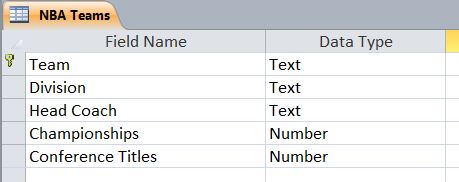
Enter the data for all NBA teams. Make sure you name the teams
identical to the way they're named in the NBA Players table so that the two
tables can have a relationship. Wikipedia is a good source for the team
information.

5. Create a query showing the free throw percentage for players with over
100 free throws. Sort it in descending order of FT%.
Under the Create tab, select Query Design. In the Show
Table window, add the NBA Players table. Add the fields and
criteria shown below. Run the query. Right-click the tab and rename
it to FT% for Players with over 100 FT's.
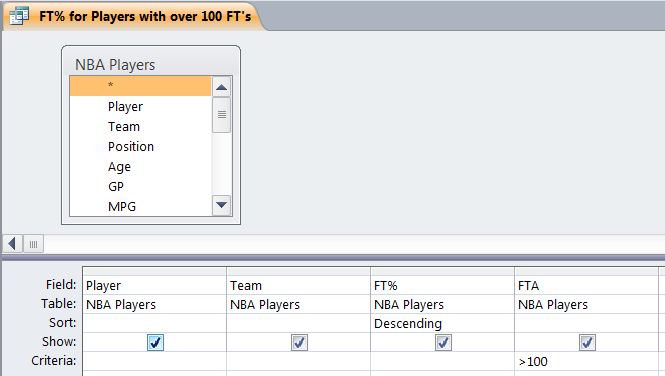
6. Create a query for players over 35 years old. Add both tables as
shown below so that you can list the player's Division from the Teams table.
Note that the tables should have a relationship between the Team field.
Sort it in descending order of Age.
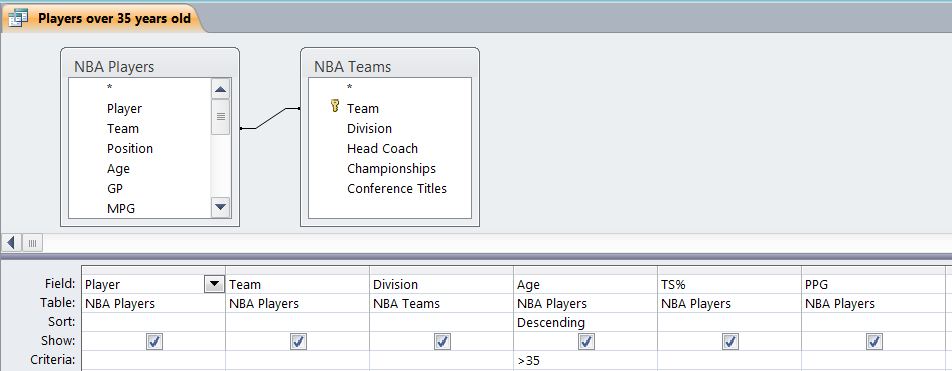
7. Create a query for players under 21 years old. Show the fields
shown below. Sort it in ascending order of Age. Notice that your
name will appear at the top of this query.
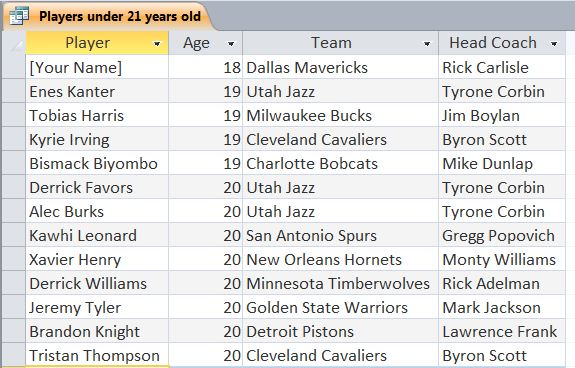
8. Create a query showing players who scored more than 20 points per game.
Show the fields shown below. Sort it in descending order of PPG.
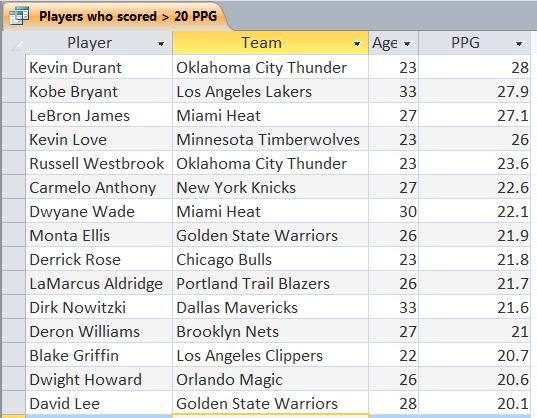
9. Create a query named Teams with most Championships. Use
the Teams table only. Show
these fields: Team, Division, Head Coach, and Championships. Sort it in
descending order of Championships.
10. Use the Report Wizard to create the report for Team Player
Stats. Using the NBA Players table, select these fields: Player,
Team, Age, FT%, TS%. Select Team for the grouping. Under
Summary Options and select the following:
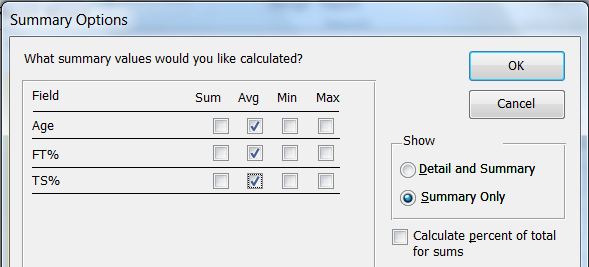
Your report should look like this:
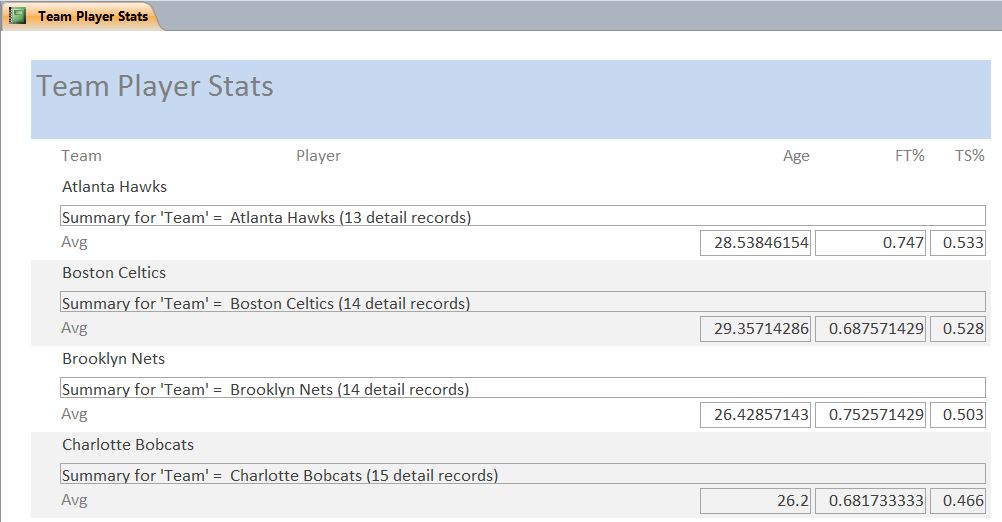
11. You're finished!!!
